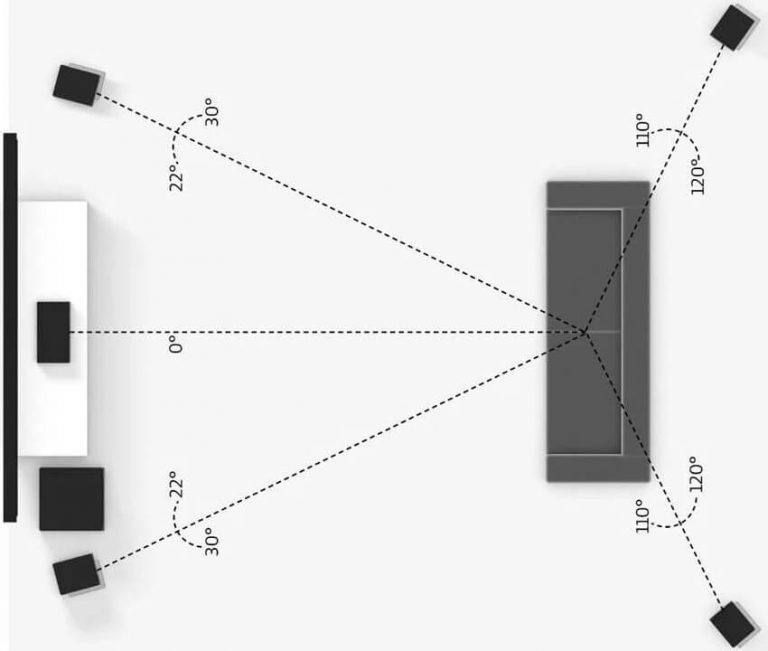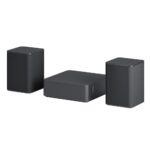Kicking off with 5 Key Differences Between 5.1 and 7.1 Surround Sound, this comparison delves into the nuances of these popular audio systems, shedding light on their distinct features and benefits.
Exploring speaker configurations, sound channel distribution, immersion, spatial audio, compatibility, and cost, this guide breaks down everything you need to know to make an informed decision.
Overview of 5.1 and 7.1 Surround Sound

When it comes to surround sound systems, both 5.1 and 7.1 setups offer an immersive audio experience that enhances movie nights, gaming sessions, and music listening. However, there are key differences between the two configurations that can impact your overall sound quality and spatial awareness.
Differences in Configuration
- 5.1 Surround Sound: This setup consists of five speakers and one subwoofer. The five speakers are placed strategically around the room – two in the front (left and right), two at the back (left and right), and one in the center. The subwoofer is typically placed on the floor to deliver deep bass frequencies.
- 7.1 Surround Sound: In contrast, a 7.1 system includes seven speakers and one subwoofer. The additional two speakers are positioned on the sides of the room, further enhancing the audio spatialization and creating a more immersive surround sound experience.
Suitability of Each System, 5 Key Differences Between 5.1 and 7.1 Surround Sound
- 5.1 Surround Sound: Ideal for smaller rooms or spaces where a more compact setup is preferred. It still provides an excellent surround sound experience for movies and games.
- 7.1 Surround Sound: Suited for larger rooms with more space to accommodate the additional speakers. The extra speakers enhance the depth and realism of the audio, making it perfect for dedicated home theaters or gaming rooms.
Speaker Configuration
In a surround sound system, the speaker configuration plays a crucial role in delivering an immersive audio experience. Let’s explore how the speaker setup differs between a 5.1 and 7.1 surround sound system and the impact of speaker placement on sound quality in each setup.
5.1 Surround Sound System
In a 5.1 surround sound system, the setup consists of five audio channels and one subwoofer. The configuration includes:
- Front Left and Front Right speakers placed in front of the listener.
- Center speaker positioned centrally for clear dialogue and vocals.
- Surround Left and Surround Right speakers placed behind or to the sides of the listener for ambient sound effects.
- Subwoofer for low-frequency effects and bass enhancement.
7.1 Surround Sound System
A 7.1 surround sound system expands on the 5.1 setup by adding two additional speakers for a more immersive audio experience. The configuration includes:
- Front Left, Front Center, and Front Right speakers for a dynamic front soundstage.
- Surround Left and Surround Right speakers for enveloping ambient effects.
- Rear Surround Left and Rear Surround Right speakers placed behind the listener for enhanced spatial sound.
- Subwoofer for deep bass and low-frequency effects.
Impact of Speaker Placement
Proper speaker placement is essential for achieving optimal sound quality in both 5.1 and 7.1 surround sound systems. Placing speakers in the right positions can enhance audio clarity, imaging, and overall immersive experience. Incorrect placement may result in sound imbalances, poor localization, and diminished surround effects. It is crucial to follow manufacturers’ guidelines and experiment with speaker positioning to find the best configuration for your listening environment.
Sound Channel Distribution

In a surround sound system, the distribution of sound channels plays a crucial role in creating an immersive audio experience for the listeners. Let’s delve into how sound channels are distributed in both 5.1 and 7.1 surround sound setups and explore how the additional channels in 7.1 enhance the overall audio quality.
Sound Channel Distribution in 5.1 Surround Sound
In a 5.1 surround sound system, the audio is divided into six channels: front left, front center, front right, rear left, rear right, and the subwoofer channel. The front speakers are responsible for delivering dialogue and sound effects, while the rear speakers provide ambient noise and surround sound effects. The subwoofer channel handles low-frequency sounds, adding depth to the audio.
Sound Channel Distribution in 7.1 Surround Sound
In a 7.1 surround sound system, two additional channels are introduced compared to the 5.1 setup. In addition to the front, rear, center, and subwoofer channels, there are now two side channels. These side channels enhance the spatial audio experience by providing more precise sound localization and enveloping the listener in a more immersive sound field.The Additional Channels in 7.1 Enhance the Audio Experience:
- The inclusion of side channels in a 7.1 surround sound system allows for more accurate positioning of sound, creating a more realistic audio environment.
- With the extra channels, sound effects can be more precisely directed around the listener, enhancing the overall immersion in movies, games, and music.
- The expanded soundstage provided by the additional channels in 7.1 surround sound results in a more dynamic and lifelike audio experience, making the listener feel like they are right in the middle of the action.
Immersion and Spatial Audio: 5 Key Differences Between 5.1 And 7.1 Surround Sound
When it comes to surround sound systems, the level of immersion and spatial audio can greatly impact your viewing or gaming experience. Let’s delve into how 5.1 and 7.1 surround sound setups differ in creating a more realistic sound environment.
Immersion with 5.1 Surround Sound
5.1 surround sound systems consist of five speakers and one subwoofer, delivering sound from the front, rear, and center channels. This configuration allows for a more immersive audio experience by accurately placing sound effects and dialogue around the listener. For example, in a movie scene where a car is approaching from behind, you can hear the sound moving from the rear speakers to the front, enhancing the sense of realism.
Enhanced Spatial Audio with 7.1 Surround Sound
7.1 surround sound systems take immersion to the next level by adding two additional surround speakers to the setup. These extra speakers provide even more precise audio positioning, creating a more spacious and enveloping soundstage. With 7.1 surround sound, you can better distinguish between subtle sound cues and feel like you are truly in the middle of the action.
Movies and Games Optimized for 7.1 Surround Sound
- Movie: “Gravity” (2013)
-This visually stunning film utilizes 7.1 surround sound to immerse viewers in the vastness of space, with sound effects coming from all directions to enhance the feeling of weightlessness. - Game: “Uncharted 4: A Thief’s End” (2016)
-This action-adventure game takes full advantage of 7.1 surround sound to create a dynamic audio landscape, where the player can pinpoint enemy locations and environmental cues with precision.
Compatibility and Cost
When deciding between a 5.1 and 7.1 surround sound system, it is essential to consider the compatibility with different devices and the cost implications associated with each setup.
Compatibility with Different Devices
Both 5.1 and 7.1 surround sound systems are compatible with a variety of devices such as TVs, Blu-ray players, gaming consoles, and AV receivers. However, it is important to note that some devices may have limited support for 7.1 surround sound, which could impact the overall audio experience. In contrast, 5.1 systems are more widely supported across different devices, making them a more versatile option for most setups.
Cost Implications
Setting up a 7.1 surround sound system typically involves purchasing additional speakers compared to a 5.1 system. This means that the overall cost of a 7.1 system can be higher due to the increased number of speakers required. Additionally, higher quality speakers with more advanced features can also contribute to a higher cost for a 7.1 system. On the other hand, a 5.1 system may be more budget-friendly for those looking to achieve immersive audio without breaking the bank.
Choosing the Right System
When choosing between a 5.1 and 7.1 surround sound system, it is important to consider your budget and compatibility requirements. If you have a limited budget and prioritize versatility across different devices, a 5.1 system may be the best choice. However, if you are willing to invest more in additional speakers and want to experience a more immersive audio environment, a 7.1 system could be worth the extra cost.
Ultimately, the decision should be based on your specific needs and preferences.
Closing Summary

In conclusion, understanding the 5 key differences between 5.1 and 7.1 surround sound systems can help you elevate your audio experience to new heights. Whether you’re a movie buff, a gamer, or a music enthusiast, choosing the right setup can make a world of difference in how you perceive sound.
Popular Questions
Is a 7.1 surround sound system always better than a 5.1 system?
It depends on your preferences and the size of your room. While 7.1 systems offer more channels for a richer audio experience, a well-configured 5.1 system can still provide excellent sound quality.
Do I need to buy new speakers for a 7.1 setup if I already have a 5.1 system?
Not necessarily. You can upgrade your existing 5.1 system by adding two more speakers to create a 7.1 setup. Just ensure that your AV receiver supports the additional channels.
Are 7.1 surround sound systems significantly more expensive than 5.1 systems?
Typically, yes. The cost of a 7.1 system, including additional speakers and a compatible receiver, can be higher than a 5.1 setup. However, prices vary based on brands and specifications.




